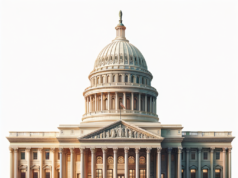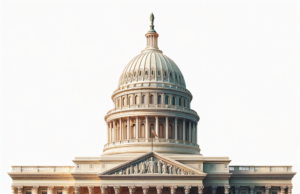Contents
- 1 Understanding the New Firearm Licensing Regulations: An Overview of Key Changes
- 2 The Impact of Recent Legislation on Firearm Ownership and Licensing Procedures
- 3 Step-by-Step Guide to Navigating the Updated Firearm Licensing Application Process
- 4 Essential Documentation Required for Compliance with New Firearm Licensing Laws
- 5 Frequently Asked Questions About the Revolutionary Firearm Licensing Changes
- 6 Future Implications: How These Changes May Shape Gun Ownership in the Coming Years
In a significant shift in firearm regulation, recent legislative changes have introduced a new framework for firearm licensing that is set to reshape the landscape of gun ownership in the country. These revolutionary changes aim to enhance public safety while streamlining the licensing process for responsible gun owners. As individuals and communities grapple with these updates, it is essential to understand the implications of the new regulations and how they affect current and prospective firearm owners.
Understanding the New Firearm Licensing Regulations: An Overview of Key Changes
The recent overhaul of firearm licensing regulations introduces several key changes designed to improve accountability and safety in gun ownership. Among the most notable alterations is the implementation of a universal background check requirement for all firearm purchases, including private sales. Additionally, the new regulations mandate that applicants undergo a comprehensive training program focused on safe handling and storage practices. Furthermore, the age for obtaining a firearm license has been raised to 21, with exceptions made for military personnel. These changes reflect a growing recognition of the need for stricter oversight in the wake of rising concerns over gun violence and accidents.
The Impact of Recent Legislation on Firearm Ownership and Licensing Procedures
The impact of the recent legislation on firearm ownership is profound, as it not only alters the licensing procedures but also influences the culture surrounding gun ownership. With the introduction of universal background checks, gun owners must now navigate a more rigorous vetting process, which aims to prevent firearms from falling into the hands of individuals with a history of violence or criminal activity. Additionally, the requirement for training programs is expected to foster a greater sense of responsibility among gun owners, potentially reducing the incidence of accidental discharges and misuse. While these changes may be met with resistance from some segments of the population, proponents argue that they are necessary steps toward creating a safer society.
Navigating the updated firearm licensing application process can seem daunting, but understanding the steps involved can simplify the experience. First, prospective applicants must familiarize themselves with the specific requirements set forth by their state or local jurisdiction, as regulations may vary. The initial step involves completing a background check application, which can typically be submitted online or in person at designated agencies. Following this, applicants must enroll in an approved firearm safety training course, which often includes both theoretical and practical components. Once the training is completed, individuals can submit their application, along with any required documentation, to the appropriate licensing authority. It is crucial to allow sufficient time for processing, as the new regulations may lead to increased application volumes.
Essential Documentation Required for Compliance with New Firearm Licensing Laws
To ensure compliance with the new firearm licensing laws, applicants must prepare a comprehensive set of documentation. Essential documents typically include proof of identity, such as a government-issued photo ID, and evidence of residency, which may require utility bills or lease agreements. Additionally, applicants must provide certificates of completion for any mandated firearm safety training courses. If applicable, individuals may also need to submit documentation related to their military service or any prior firearm licenses held. It is advisable for applicants to review their state’s specific requirements thoroughly, as failure to provide the necessary documentation can result in delays or denials of the application.
Frequently Asked Questions About the Revolutionary Firearm Licensing Changes
As the new firearm licensing regulations take effect, many individuals have questions regarding their implications and requirements. Common inquiries include concerns about the timeline for processing applications, the costs associated with obtaining a license, and the specifics of the training programs mandated by law. Additionally, many are curious about how these changes will affect existing firearm owners and whether they will need to reapply for licenses. It is essential for individuals to seek information from official sources, such as state law enforcement agencies or licensed firearm instructors, to ensure they have accurate and up-to-date information regarding the new regulations.
Future Implications: How These Changes May Shape Gun Ownership in the Coming Years
Looking ahead, the revolutionary changes in firearm licensing are poised to have lasting implications for gun ownership in the coming years. As public awareness of gun safety and responsible ownership grows, it is likely that these regulations will foster a culture of accountability among firearm owners. Furthermore, the increased emphasis on training and background checks may lead to a decline in gun-related incidents, thereby influencing public perception and policy surrounding firearms. However, the effectiveness of these changes will ultimately depend on their implementation and the willingness of communities to engage in constructive dialogue about gun ownership. As society continues to grapple with the complexities of firearm regulation, these new laws may serve as a pivotal turning point in the ongoing conversation about gun rights and public safety.
In conclusion, the recent changes to firearm licensing regulations represent a significant evolution in the approach to gun ownership and public safety. By understanding the key changes, navigating the updated application process, and complying with new documentation requirements, individuals can ensure they remain informed and responsible gun owners. As these regulations take root, their long-term effects on firearm culture and safety will continue to unfold, prompting ongoing discussions about the balance between rights and responsibilities in the realm of gun ownership.

























